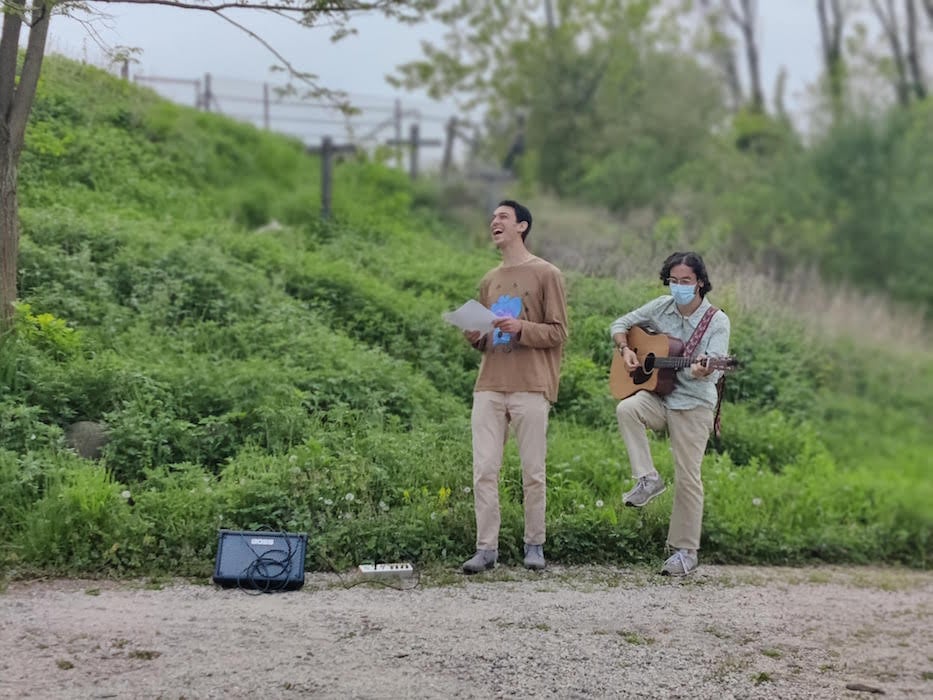
Jadan Anderson Photos.
Four farmers picked at a field full of mugwort, seemingly getting nowhere. One had a tinkling voice and muttered about healing crystals. The next, a clear voice wondering aloud of the possibilities afforded by science. The third, a coarse voice calling everyone to put their backs back into the work. And the last, a soft, mediating presence. They wiped their brows and began to exchange gentle banter that headed toward conflict.
Underneath them, a musician crooned to the sound of a simple, country melody plucked out on a guitar. Something about what happens when we talk, he sang.
All of them were part of This Place is a Message, an outdoor play written by Taiga Christie and Zoë Batson. Last week, the work came to New Haven as a joint project among Yale Schwarzman Center, the Yale School of Public Health’s Humanities, Arts and Public Health Practice at Yale (HAPPY) Initiative, and Faultline Ensemble. The last is an arts collective inspired by community-based performance traditions using art as an alternative model of “health education, emergency response, and collective process.”
This Place is a Message was conceived two years ago, over a discussion about the effects of climate change on mental health. At the time, Christie and Batson were weeding out mugwort, an invasive species to America known for its historically purported medicinal properties and its mulishness. It evolved into a play about the importance of understanding emotional experiences in climate change communication, using real events, ideas, and words from climate scientists as the foundation for the play’s plot.
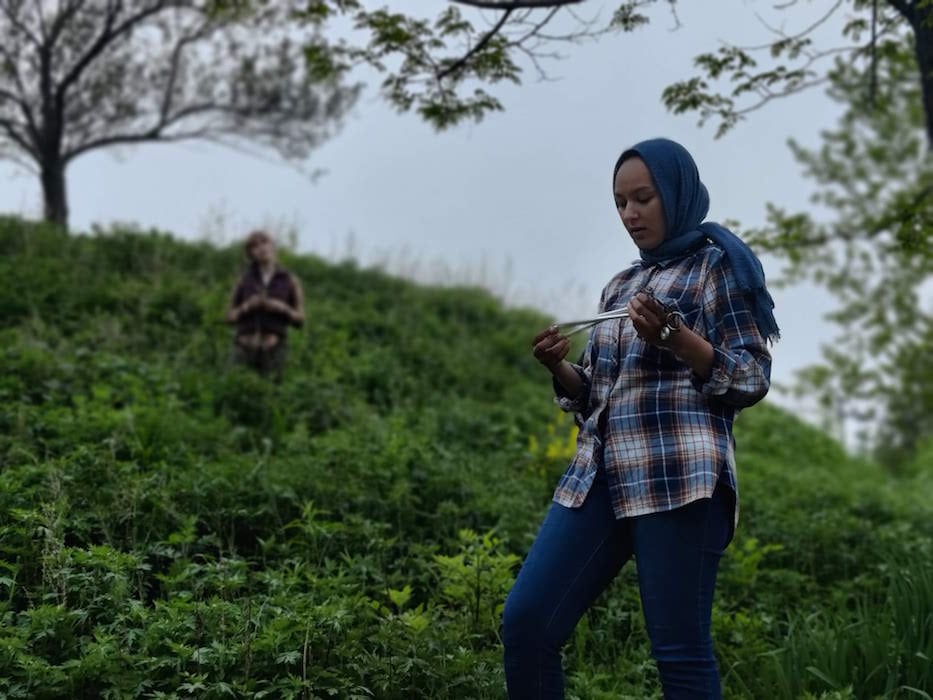
Opening scene. Left to right: Liz Harnett as Alex, Sarah Ghonaim as Carl.
The show follows three groups. This first is the gardeners, whose increasingly tense arguments over the futility of pulling mugwort represent the often hostile evolution of lay conversations over challenging social issues, like climate change. The second group is the climate scientists, whose dialogue is sourced from handwritten letters collected by Joe Duggan. Since 2014, Duggan has collected letters from real climate scientists, asking them to write on the question, “How does climate change make you feel?”
The third group is based off of the Human Interference Task Force, a collection of scientists, science fiction writers, and architects that banded together in the 1980s to design markings for nuclear waste sites.
“There are so many divides in communication,” Christie said. “We have all felt that recently during the pandemic and with vaccination campaigns. One thing that hasn’t been explored is the emotional experience of trying to communicate across those divides—people usually just ask for facts and opinions. I thought that that applied to conversations about climate change, too.”
Last weekend, the show unfolded at the Yale Landscape Lab, an outdoor classroom of vast forest and a number of small farms. Audience members followed the story line into the forest of the Landscape Lab before returning to the show’s place of origin. The dialogue between gardeners and the climate scientists’ monologues explored the nitty-gritty, often hurtful and frustrating conversations people may have with each other on divisive topics.
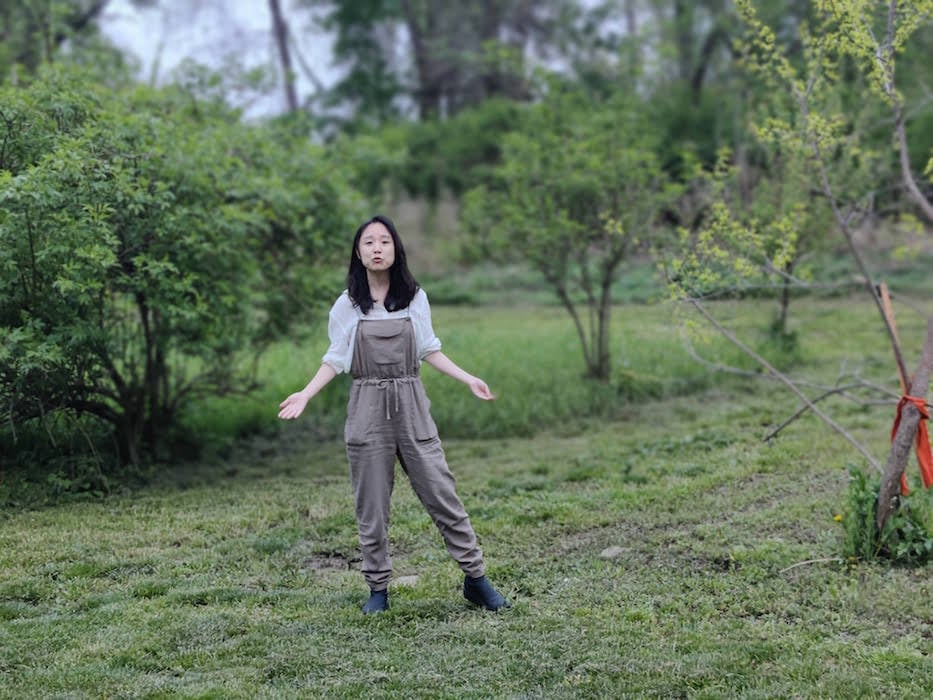
Second scene, actress Jaewon Lee.
“How do I feel? Like no one is listening to me,” sighed a climate scientist played by Keith Nelson. A walk further into the forest revealed three more scientists, all perhaps uncharacteristically emotional as they proclaimed feelings of loneliness, sickness, frustration, and fear for their loved ones. One climate scientist, played by Boris Cyusa, lamented:
“Climate change is framed as an all-or-nothing problem . . . As a scientist, I must be absolutely certain or else I know nothing . . . the actions I suggest must either fix the whole problem or they’re not worth doing . . . we need to stop thinking about doomsday and start thinking about every day.”
The play also explored communication not just across current political, ideological, and scientific divides, but across education, socioeconomic status, and time.
In one such scene, a blackboard was decorated with a diagram of human kidneys. Four new characters grace the stage. “Written communication has only been around for 5,000 years,” said the character Sebeok, strutting in a muted suit. “How do we communicate a message that will last 10,000 years? Well, which communications have lasted the longest? Look to the Old Testament!”
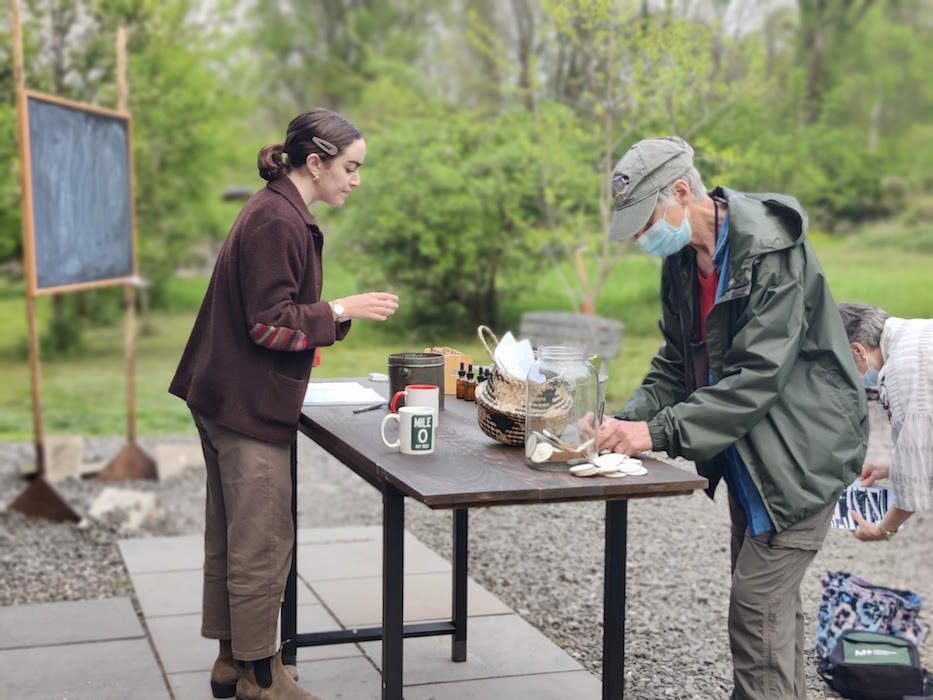
Audience members fill out their surveys before the show.
Sebeok, played by Nicole Garneau, was based on linguist Thomas Sebeok. In the early 1980s, the U.S. Government asked him to consult scientists, architects, and science-fiction writers for a communications solution to designate a newly-planned site of high-level nuclear waste on Yucca Mountain as a serious health hazard for the next ten millennia.
The play dramatized Sebeok’s proposal to build an “atomic priesthood” charged with telling the following generations about the dangers of Yucca Mountain without explaining why they should stay away from the site. It was a gesture to the idea that knowledge need only communicate actions, not further knowledge, to the non-scientific communities.
Other themes—the tragedy of authoritarian control over scientific messaging, the difference between villainizing people and villainizing their ideas—abounded in this play.
At one point, the character Fabbri asked Sebeok, “Do you hate us?”
“I hate your ideas,” Sebeok replied. Fabbri, in turn, asked if there was a difference.
Batson, who jumped in as the character Fabbri for the Friday night showing, said that she wants the show “to make space”—for emotional experiences of climate change and communication, for brainstorming a spectrum of solutions to the climate change problem, for all sorts of people to join in on the conversation.
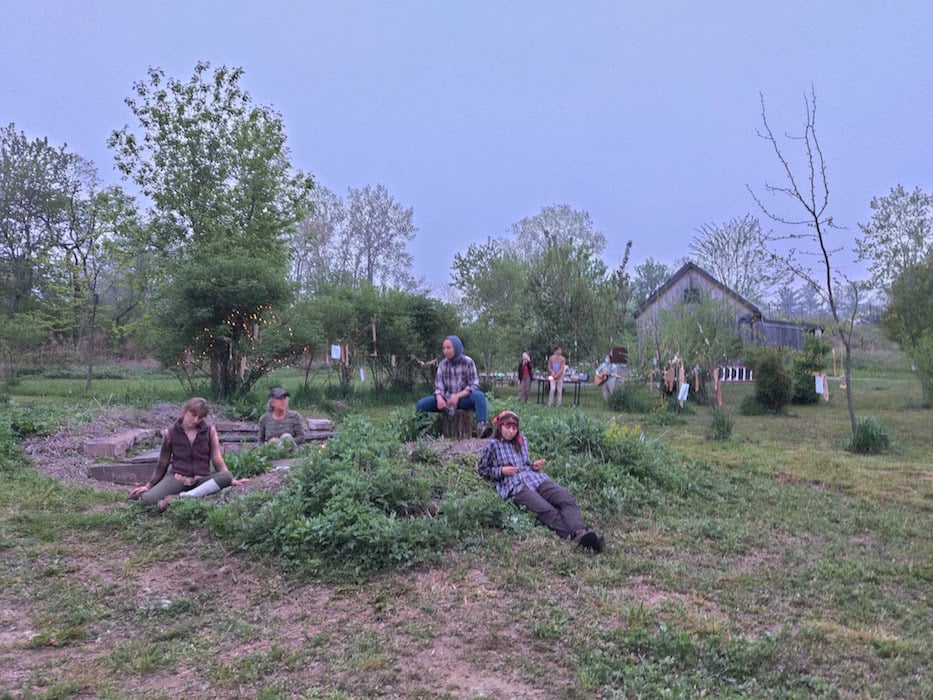
Final scene, in which the entire cast calls for “a new language.”
Jennifer Harrison, who has worked closely with Christie since the early stages of This Place is a Message, echoed that call.
“Scientific data usually stays in scientific reports where people who are not scientists don’t have access to it,” she said. “This play dramatizes that data — it brings the emotions to it.”
This Place is a Message acts as a new type of data visualization, making numbers and figures and trends that can be daunting to try to understand not only easier to comprehend factually, but easier to feel. This data visualization—bringing this information into the arts like theater and music—encourages empathy, without forsaking fact, in the midst of debates on divisive issues.
More than the content of the play, that encouragement lies in the play’s interactive nature. The audience was in the setting with the characters. The audience walked past the play’s climate scientists with the option to leave or listen (and everyone chose to listen). The audience even filled out a survey at the beginning and end of the play to track their engagement and feelings with the content.
At the very end of the play, crew members built an exhibit with some audience members’ survey answers anonymously hung across twine. People stopped to read them.
This Place is a Message begins a conversation by calling for a new language with which to talk about climate change. What that new language entails is not articulated. But the intention may not have been for the audience to be able to define that new language.
Maybe, instead, the audience was called to create spaces for ideation and collaboration on the foundation of empathy.